Of Mice and Machines: Porsche Fuses, Death Traps, and Imagination Gone Awry
I keep a few of my cars outside under covers. As winter approaches, this invites critters, as we say in the South, to find shelter in the relatively warm confines of various nooks and crannies throughout the undercarriages and interiors of these cars. I’m not alone, of course. Hobbyists who store cars, including in unheated buildings, have an annual battle with mice and certain reptiles as the weather turns cold.
My own campaign of death and deterrence for mice has come down to baits, traps, and sticky paper (my least favorite—some things you can’t unsee). Mice seem to get used to my strategies, and recently I even noticed mouse excrement on top of my slappy trap—the critter had literally pooped on my idea of a viable lethal bait system for him. So now I use baits placed strategically around the trunk, the interior, and the engine bay, plus a spring trap in the interior, plus a sticky trap for good measure. I am adding odds in my favor in lieu of truly knowing my enemy.
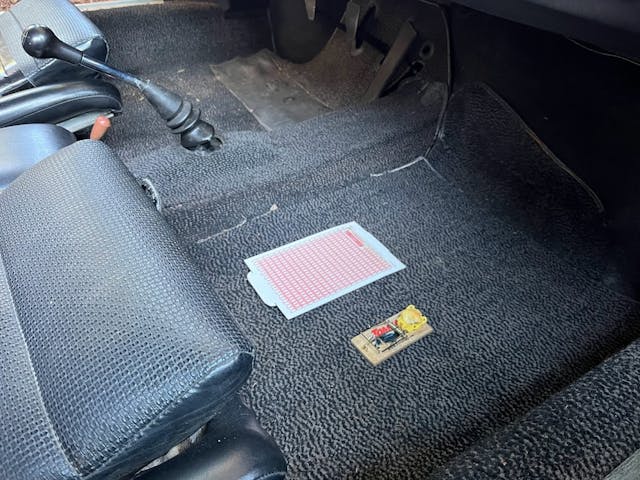
One night in early December, I realized that it had been a month since I’d exercised one of my air-cooled Porsches, so I went out after dinner to take a short drive. The routine is simple: Pull off the car cover, reconnect the battery, check the slappy-slap mousetrap on the passenger floor for a dead tenant, then proceed with starting the car and the subsequent driving fun. This one particular evening, the mouse trap was empty so all went as planned on my getting off to a good start. Being a visual guy, I did not really want to drive while seeing a mouse trap on the floorboard, but it was dark outside and my dash lights are 1970s dim. As the saying goes, out of sight, out of mind. So I left the trap where it lay.
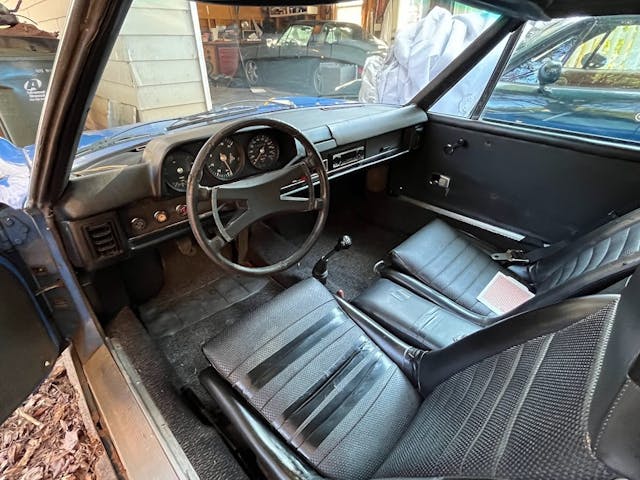
The engine started relatively willingly, I backed out of the driveway through the usual cloud of heavy fumes and oil vapors, and I was off. Everything was warming up nicely on this cold December evening, and soon I had heat wafting from the floor vents (“wafting” is the maximum setting on vintage Porsche heaters). I was falling in love again with this special vintage machine, just a simple engine and four wheels, with minimum gadgets and doodads to distract from a pure driving experience.
About three miles into the drive, however, things started to go a bit wrong. I smelled a distinct burning odor, definitely organic, not oil- or gasoline-based (or plastic-based, as wiring harnesses give off when thermally excited). I surmised that a varmint had started a nest in one of the car’s exhaust heat exchangers and that the fumes were coming into the cabin. Here is where I made a critical but unknown error.

The air vent and heating controls on early Porsches are purposely confusing, a means to humble owners who have not memorized their user manuals. On this model, there are three unlabeled levers that have a particularly satisfying feel as you slide them from left to right, even if their purpose is impossible to remember. The top lever does something related to the fan speed, the bottom lever has some temperature-related function, and the middle lever’s purpose is unclear, but I always associate it with fresh air.
My error, unbeknownst to me, was to move the top lever over to the right position to let some cool outside air into my stinky cockpit, rather than the correct middle lever. I will blame the darkness for me using the wrong lever. It turns out that a mouse had indeed already been in the car, and had started a nest in the blower motor located in the front trunk, which served to jam the fan’s blower wheel into a fixed position. Engaging the “high” setting on the top lever fan switch sent the desired 14 volts or so to the motor, which promptly became an amperage dead end, the motor being unable to rotate due to the various newspaper and paper towel tatters carefully placed there by said mouse. This soon overloaded the circuit leading to the blower motor, and concurrently, began to overheat the fuse for this shared circuit.
In a normal vehicle, this would simply result in a blown fuse. What I was driving is not a normal vehicle but a 50-year-old German car that has, what was at the time, a well-engineered electrical system. That system was pumping its little heart out trying to carry the extra amps to the motor in an attempt to make it turn. If this had been 1972 (the year this car was made) all would be well, and the circuit might even handle the extra load without failure. Enter the modern world, however, and we have to consider the weak link that had been introduced to this circuit when I, the owner, lazily Amazon-ed some off-shore, off-brand fuses for the car. The original German fuses were wonderfully simple assemblies consisting of a ceramic carrier wrapped with the appropriate-gauge metal fusing element. Each color of fuse matches its particular rating, and you can visibly see thicker mid-sections on the higher-rated fuses. So elegant, so simple.
The modern off-shore copies of these robust German designs, however, do not use heat-resistant ceramic cores but rather plastic material which looks and fits just the same, but has a much lower heat capacity. This is not generally a problem, until you try to pass a lot of amperage through the fusing element and the high current slowly starts to heat up the fuse, approaching the melting temperature of the plastic in question. As the cheap plastic core softens, it loses its dimensional integrity. The clever Porsche/Bosch clips in the fuse box compress the fuse core into a banana shape, and the clips can no longer hold the fuse in place.

The first warning that all was not well just a few minutes after I’d slid the fan lever to “high” was that the alternator warning light came on. This alerted the DEFCON 1 status in my automotive lizard brain because a) my battery was no longer being charged; and b) it was pitch-dark outside and I had to keep my headlights on to get home; and c) I was 10 miles from home, and my battery is a four-year-old Mazda unit that I got from Mazda racing guru Glenn Long when he was making Spec Racers out of ND Miatas, so it had questionable depth due to its age.
In someone else’s world, all of this might have not been a catastrophic situation. An overheated and melting off-shore fuse, even without blowing, might just shorten/relax its length enough to lose contact with the terminals, and the circuit would simply go dead in a moment of self-diagnosing failure. However, as clever as Porsche’s German engineers were, one error might have been installing the fuse box directly above the driver’s feet. If an owner were, say, to use a cheap fuse with a plastic core, and if that fuse were to melt and fall out, and if the previous owner had removed the fuse box cover and lost it years ago, there just might be a direct trajectory from the melting fuse to the driver’s ankle. Welcome to my world, December 7, 2023 at 9:16 p.m. Good thing this was not the 1980s and I was no longer wearing cuffed pants.
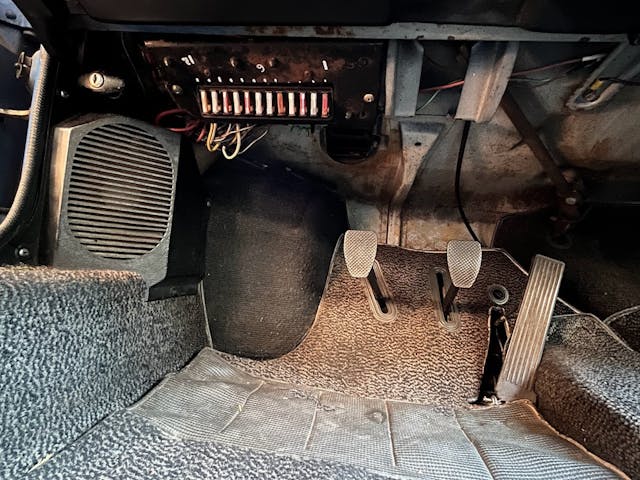
The human brain is a wonderful storage device, and while I didn’t anticipate the burning sensation in my left ankle, I did immediately recognize it for what it was—jetsam from my electrical failure giving me empirical evidence of the burned-out fuse. I grew up on British cars, so this was not the first time this has happened.
I saw a neighborhood entrance 30 feet ahead so jammed everything I had on the brake pedal (this car has early ABS: “About to Brake Sometime”) and pulled a hard righthand turn into it. This 0.8 g maneuver, inelegantly executed, served up a new problem as the accompanying centripetal forces launched the armed-and-ready mouse trap in the direction of my right ankle, which it proceeded to impact with great enthusiasm, triggering its release mechanism.
For this I had no such past memory data point to pull up. What I did have is the recollection of once being on a drive in this very car and finding a medium-sized black snake below the brake pedal as I was cruising down a country road. My mind connected the long-past snake incident with the biting sensation in my exposed right ankle. My actual lizard brain then took over and I essentially leapt from my seat into the roof of the car, an involuntary convulsion of self-preservation all while rolling into the neighborhood at about 30 mph.
A 60-some-odd human brain takes a bit longer to recover from trauma than a younger one does, and it took me a good 50 yards of coasting past this neighborhood’s Christmas lights to regain at least a portion of my senses. Regrouping, I pulled to the side of the road, yanked out my phone and turned on the flashlight feature. Looking down I saw, not an enraged snake, but only an empty floorboard. Then I noticed the sprung mouse trap hanging from my pants leg. It was at that moment that my folly came into full focus. I left the trap in place, dangling as a badge of shame and stupidity, and quickly jumped back in to start home. I chose not to install a new fuse, since they all were of the same poor quality as the one that had tattooed my left ankle. And so, my electrical death march started. At the one stoplight of my route, I cut the headlights off, cringing when I turned them back on, anticipating the engine to stutter and stall from a lack of juice to the ignition coil.

As I drove I did some quick mental math and worked backward on my amperage budget:
- A used spark plug will fire (in a compressed-air environment) with as little as 5000 volts.
- My Bosch ignition coil on this car has about a 100:1 lift ratio as an inductive transformer, amplifying the alternator’s 14 volts into 100 primary field volts when the circuit voltage is cut (thanks to the magic of a magnetic field collapsing), and then inducing 100 times that voltage in the secondary field coil (the one that zaps you—always the best cure for hiccups in my family).
- So, I’m probably okay until I get down to 5 volts in the battery.
- My headlights and taillights combined pull around 20 amps and the ignition coil pulls about 5 amps.
- My old battery probably has a 15 amp-hour capacity left in it.
- I maybe have a safe half-hour of driving before life goes dark.
This is why engineers are generally optimists: We make up pedantic equations, often on the fly, to make ourselves feel better.
Fuzzy logic aside, I sweated the last eight miles to my house. I am happy to say that we both made it, the voltage in the battery inversely proportional to my adrenaline as every quarter-mile passed beneath me.
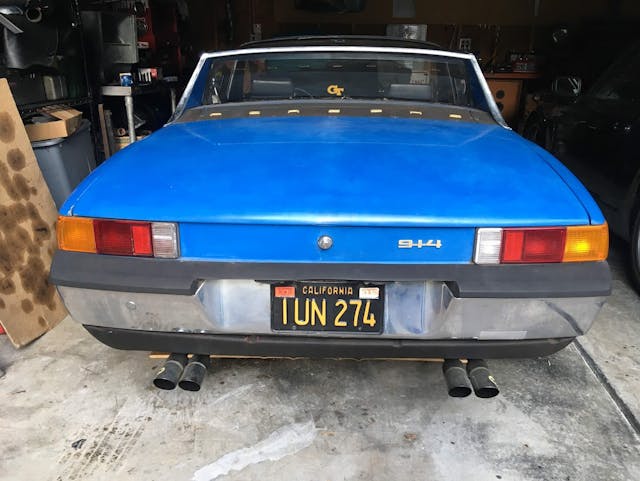
They say your brain permanently records strong emotions, maybe as a survival mechanism to prevent future trauma. In the classic-car world, events such as those I had experienced are chalked up as “character building” and are, in some crazy way, considered to be the charm of these old machines. Hmm.
In any case, thanks, old Porsche, for a memorable ride.
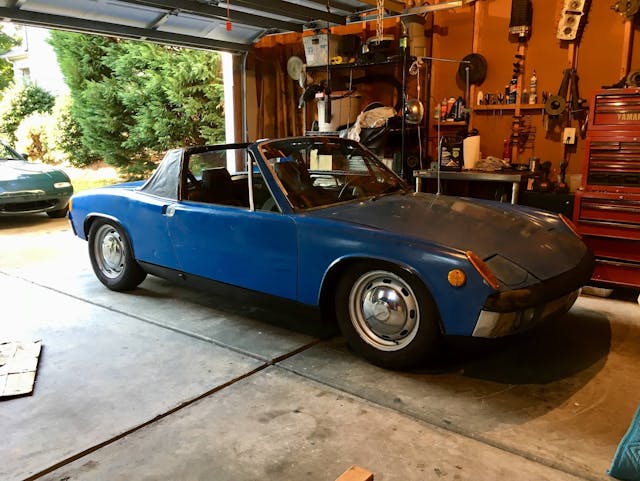
***
Check out the Hagerty Media homepage so you don’t miss a single story, or better yet, bookmark it. To get our best stories delivered right to your inbox, subscribe to our newsletters.

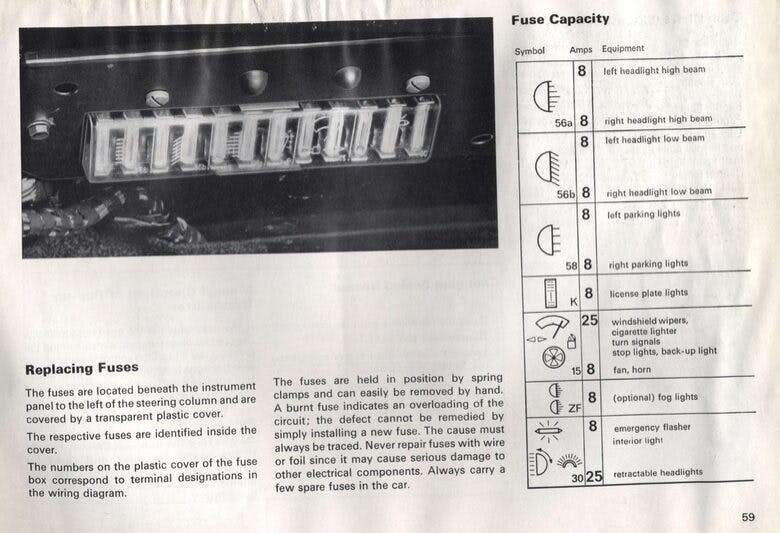
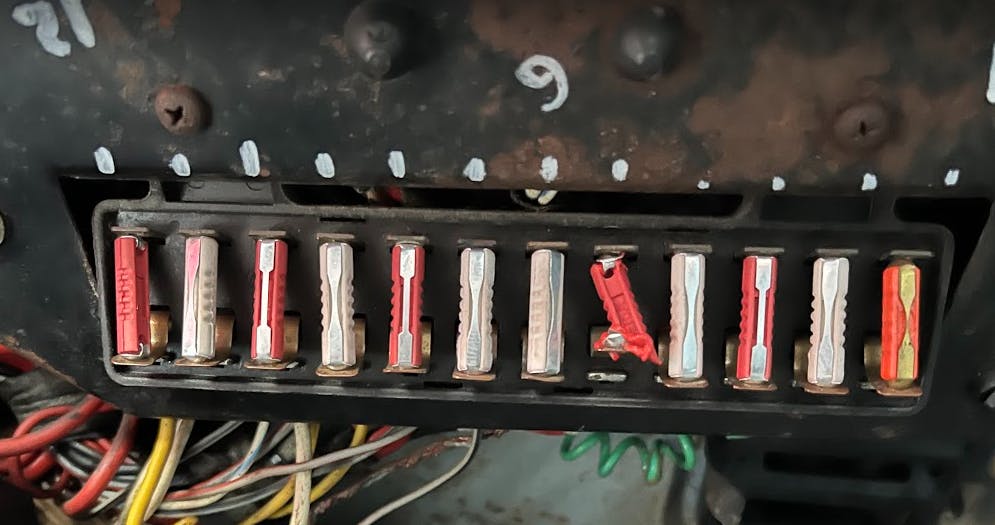
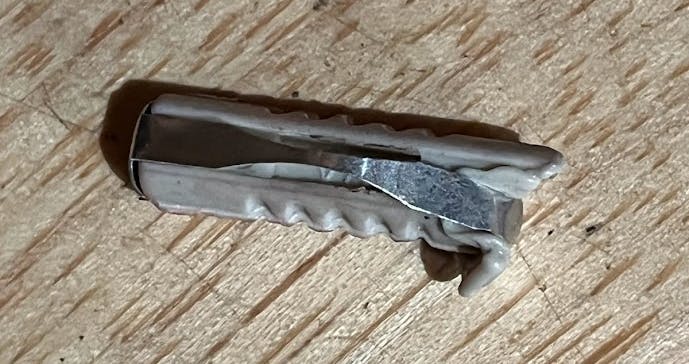


Another terrific column, Norman!
In a past life, a trucking outfit I worked for had a number of Renault trucks that someone had amusingly put ‘MACK’ and bulldogs across the front of to lull you into thinking they were American machines. These too had the cursed fuses you refer to, but in the case of these, the springs would lose their tension ejecting even healthy fuses at random intervals
In an even earlier life, I was driving a Diesel-powered work truck – a lot sweeper – that had experienced an alternator failure about 3/4 the way into my route. It was approaching morning, and this was the pre-cellphone era, so I decided to forge on. Primary concern here was the fuel shutoff solenoid losing the ability to stay in the charged ‘run’ mode. I made it to home base with a little under 8 volts on the gauge
I purchased a car last year that had been driven 1500 odd miles since 2016. It had been a victim of a varmint.
This one had infiltrated the AC ducts and blower motor. I was lucky the smell was not heavy and most of the nest came out in the blower motor. But I still had much in the ducts. I was able to blow them out with the car blower dryer I own. The material looked like moving pad material. It came out like snow in all the vents. I was lucky to clear it and not have to rip into the dash. Also I was very lucky no wire damage was done.
While I am not a Cat person I keep a cordial relationship with the neighbors cats. Also we have a great number of Ferial cars here out of town. I only see them at night on the ring door bell.
I also must remind many out in the country like myself. if you keep a vehicle outside Ground Hogs and other tree climbing rodents love electrical wires. Why they make it from soy content I will never know. May as well make it from peanuts.
These stories are good reminders to take action before you have to repair.
Those ceramic fuses are sometimes the bane of my existence. I was having turn signal and horn issues on my 1972 BMW 2002. It felt like the steering column controls had no power. I LOOKED at the fuses and they looked fine. So, I went searching elsewhere and found no issues. I was pulling into a car show and reversed into a parking place. A friend noted I had no reverse lights. On the 2002, fuse 12 is for reverse lights, turn signals and the horn relay (among other things). I always keep a supply of spares with me and replaced fuse 12. Even though it looked perfectly fine, replacing it solved my issue.
In college I had a ’71 BMW 1600 with those same ceramic fuses and I did find that even with the fuse box cover in place and operating in California that the fuses and associated spring contacts were subject to oxidation or mild corrosion. Keeping that in mind and cleaning them on rare occasions paid dividends keeping everything that was fused working.
In all my years of driving all manner of vehicles, including a company truck, I don’t recall EVER losing a charging system in daylight. They just KNOW when to hit you, don’t they?!
I have not particularly fond memories of nearly identical fuses and fuseboxes in my VW Sciroccos. Fortunately both had been repaired to prevent fuel pump relay meltdown, and every subsequent vehicle has had blade style fuses. I do still have a few ceramic German fuses since my 1978 BMW R100S has some inside the headlight bucket.
Fortunately mice are not a problem where I live although a friend in the Willamette Valley has a massive packrat infestation in his 49 Ford F-2 to deal with.
Fuel pump relay meltdown? Check. Had to replace my 77 Rabbit’s fuse/relay block. Loved the car, tho.
Leave the sticky strip and traps on the edge of the area. mice and rats tend to hug the corners of the area they are invading. They love peanut butter, so leave that in the trap.
Google “DIY mouse bucket trap” for the best way to trap the little critters.
I find reusable plastic traps much superior and so much easier to set. I keep them ready full time indoors with peanut butter to avoid ever having an issue. Don’t need to put them in cars, but mine are all in a warehouse. Just don’t leave them where pets etc. can get to them.
Norm, nice to see that you never got over your obsession with hopeless old foreign sports cars. I’d have been disappointed to hear that you were retired, and leasing a McLaren. Me, too. Still driving my NA, waiting for them to come up with something better. After years of Miata magazine, it was wonderful to read your work again.
In my teen with my 67 Cougar I was driving home on the expressway at night when my oft-replaced $20 alternator went south. I had a 40 minute drive home with my girlfriend, and I was determined to make it. As the battery went slowly dead, I of course turned off all unnecessary devices. This later included the headlights, using the running lights, and then I turned off the running lights to use the emergency flashers because they only used the center taillights (a Cougar, remember?). If I hit the horn the engine would stumble. Made it home, but I would not take such risks now that I am a little older and have a better appreciation for life and limb (and sheet-metal).
When I was a poor college student the 6 volt battery in my 59 VW started to get weak. Since I lived at the top of a hill and the college was at the top of a hill, I put off replacing the battery by jump starting it on the hills. One evening shortly after leaving the house it was getting dark. When I turned on the headlights the engine started miss firing. I immediately headed home in the dark and scrapped together the money for a new battery the next day.
Maintenance item #1,353 on older cars which have ceramic fuses:
At monthly intervals, remove fuse box cover, spin each fuse in its holder three or four times, replace cover. This is (alleged) to scrape off minor developing corrosion between the fuse and the fuse holder clips.
Annually, remove each fuse (one at a time so you don’t mix them up, the paper label with fuse locations is LONG gone), put a small dab of Vaseline on each end, and spin each fuse in its holder three or four times. A thin coating of Vaseline around the edge of the fuse box cover may keep moisture out, unfortunately, if moisture gets in, the Vaseline will keep it in.
Before operating car (interval unspecified), pray. Alternatively, learn numerous profanities in German. It won’t help, but it might make you feel better.
Periodic sacrificial offerings should also be considered. Burnt $100 bills work best, but are not guaranteed.
For vehicles with Lucas electrics (does not use ceramic fuses), do not consider adding a first-born child to the sacrificial offering – it won’t help. Just make the stack of $100 bills taller. Do consider making the vehicle itself the sacrificial offering. That will solve all your problems as long as nobody sees you doing it. Finally, don’t try this at home unless you are also seriously underwater in your mortgage and would not mind free room and board at the local grey-bar hotel.
Glad the car and your leg didn’t burn down. Mice suck!
Raisens are superior to peanut butter. The rodents can lick the peanut butter out of the trap without triggering it but raisens need to be chewed… SLAP!